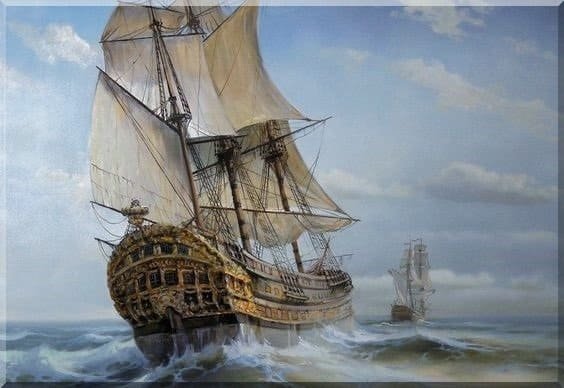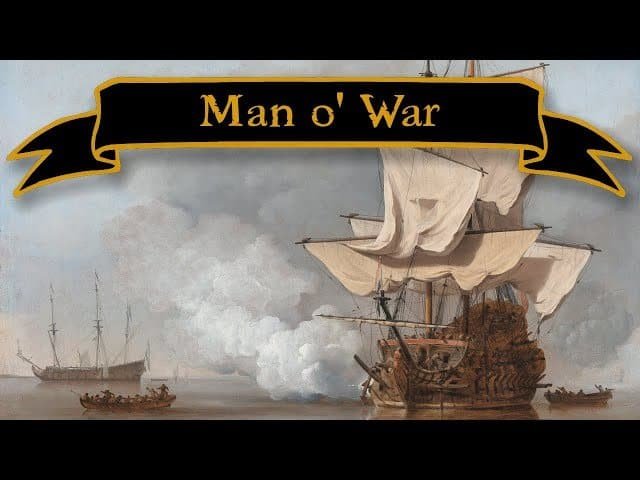Physical Address
304 North Cardinal St.
Dorchester Center, MA 02124
Physical Address
304 North Cardinal St.
Dorchester Center, MA 02124

Explore the legendary pirate ships of the Golden Age: compare the speed of sloops, the power of brigantines, and the might of frigates in maritime history adventures.
Have you ever wondered what made pirate ships so unique and essential to the legendary tales of the Golden Age of Piracy? The stories of swashbuckling pirates evoke images of daring sea adventures, treasure hunts, and thrilling naval battles. At the heart of these adventures were the ships they sailed, each designed and chosen for specific qualities that made them suitable for a pirate’s life. This article will journey through the wild waters of history, looking closely at three key types of pirate ships: sloops, brigantines, and frigates. Together, we’ll discover what set them apart and how they shaped the lives of those bold enough to become pirates.
The Golden Age of Piracy, spanning from the late 17th century to the early 18th century, was a time when the seas were teeming with pirates hunting for fortune and fame. Ships were not just vessels for transportation but vital tools of trade, conquest, and survival. The ocean offered the perfect hideaway for those living outside the law’s reach, with ships acting as floating homes, armories, and escape routes.
Why were ships so crucial to pirates? For starters, a ship was a pirate’s most valuable possession, offering speed, agility, and firepower—all necessary for outrunning enemies and capturing treasure-laden merchant ships. The kind of ship pirates chose directly influenced their strategies and success.
Moreover, pirate ships were iconic, symbolic of the freedom and lawlessness of the pirate life. They struck fear into merchant ships and were instantly recognizable with their ominous black sails and fearsome flags like the Jolly Roger.
If you’re curious about how these vessels were designed, their unique capabilities, and why certain pirate ships became legendary, read on as this article explores the fascinating differences between sloops, brigantines, and frigates.
The sloop was one of the most popular ships among pirates. Originally designed in the 17th century, they were small, nimble, and versatile. Here’s why sloops were often the ship of choice for the audacious adventurer of the sea.
Typically, a sloop had a single mast carrying a fore-and-aft rigged main sail and a jib sail, making them swift and easy to maneuver in the Caribbean’s shallow waters and narrow inlets. They could range anywhere from 30 to 60 feet in length.
Speed and Agility: Their size and rigging allowed sloops to sail closer into the wind, granting them superior ability to chase down or flee from enemy ships.
Shallow Draft: Sloops could navigate shallow waters, escape through hidden passages, and could be easily beached if needed.
The tight quarters of a sloop encouraged a close-knit crew, often composed of 20 to 75 people. This allowed for effective collaboration during raids and increased the ship’s speed due to less weight. Life wasn’t luxurious, but it was functional and efficient—qualities every pirate valued.
For pirates like Blackbeard and Bartholomew Roberts, the sloop was a favored warhorse. Its ability to launch surprise attacks on merchant vessels out of nowhere made it a formidable threat. Sloops were ideal for hit-and-run piracy tactics, where quickness and stealth were essential.

Brigantines served as a middle ground between the speed of a sloop and the firepower of larger ships like frigates. These two-masted sailing ships offered a mix of power and versatility, making them a staple choice for many pirates.
Brigantines boasted two square-rigged masts—a foremast and a mainmast—with a combination of square and fore-and-aft sails. Typically longer and more robust than sloops, they were usually about 75 to 120 feet in length.
Versatile Sailing: The mix of sails allowed for tactical flexibility, making it easier to catch the wind and adjust to changes during combat or pursuit.
Increased Capacity: Their larger size allowed for more cannons and a bigger crew, typically between 100 and 150, improving their ability to engage in prolonged battles.
On a brigantine, pirates could expect slightly more space for crew and supplies than on a sloop. This made them ideal for long-term voyages or chasing distant prizes without immediate need for resupply.
Well-known pirates like Captain Kidd and Samuel Bellamy favored the brigantine. Its blend of speed and firepower meant it was not only suitable for pursuit but also capable of holding its own in a fight. Some brigantines were even retrofitted with increased firepower, further enhancing their combat potential.
Frigates stood as the giants among pirate ships, at least in comparison to their smaller brethren. They represented power, intimidation, and endurance, serving well for pirates with grand ambitions.
Frigates were large, powerful ships with a minimum of three square-rigged masts. They could range from 150 to 200 feet in length, making them imposing figures on the high seas.
Firepower: With the ability to hold upwards of 20 to 60 cannons, frigates were built for battle, able to overpower most merchant ships and withstand attacks from naval fleets.
Endurance at Sea: Their size allowed for substantial cargo and provisions, making long voyages feasible without needing constant resupply.
Life aboard a frigate came with its challenges. With a crew of up to 200 or more, these ships required disciplined management. However, the larger space provided modest accommodations and allowed for both the storage of loot and the comfortable housing of prisoners.
Although rarer in the pirate fleet due to their upkeep and visibility, some pirates achieved notoriety with frigates. The infamous “Queen Anne’s Revenge” under the command of Blackbeard began as a French frigate before being captured and converted into a fearsome pirate vessel. Its firepower and presence were unmatched, turning it into a symbol of pirate strength and audacity.

To better understand these ships, here’s a simple table comparing key features:
| Ship Type | Length | Crew Size | Cannons | Key Advantage |
|---|---|---|---|---|
| Sloop | 30-60 ft | 20-75 | 4-8 | Speed and agility |
| Brigantine | 75-120 ft | 100-150 | 10-20 | Versatility and balanced power |
| Frigate | 150-200 ft | 200+ | 20-60 | Firepower and endurance |
Understanding these differences not only provides insights into pirate strategies but also highlights the ingenuity and adaptability pirates displayed during their pursuits.
Sloops were favored for their speed and maneuverability. They were agile in shallow waters, allowing pirates to launch surprise attacks and escape quickly.
Brigantines combined square and fore-and-aft sails, providing versatility to adjust for speed when chasing or fighting. They carried more cannons compared to sloops, offering a larger fighting capacity.
Frigates, while powerful, were expensive to maintain and highly visible, making them easier targets for naval forces. Their size also required more crew and resources, which could be challenging for pirate crews to manage.
Yes, pirate ships had vital crew roles such as the captain, quartermaster, and boatswain. These roles were crucial for maintaining order and navigating the ship effectively.
Pirate ships used various tactics such as broadside cannon fire, boarding actions, and psychological warfare with flags and intimidation. Their chosen strategy often depended on the type of ship and the target.

The fascination with pirate ships lies not just in their impressive sails and lethal capabilities, but in how they mirrored the ambitious and often dangerous lives of the pirates themselves. Each ship type—sloop, brigantine, frigate—offered distinct advantages that catered to different styles of piracy. This universal need for speed, firepower, and cunning underlines the pirate’s quest for freedom and fortune during the Golden Age of Piracy. As you consider what vessel you might choose, bear in mind that these differences defined the boundary between a pirate tale of triumph and a tale of treachery at sea.